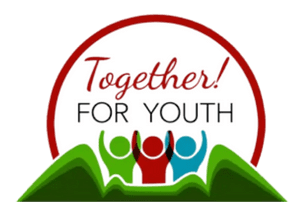TOGETHER! for Youth is a member of the North Central Marijuana Prevention and Education Network.
The mission is to mobilize its diverse set of community-based partners throughout Chelan, Douglas, Grant and Okanogan counties to promote health, wellness, and safety through substance free living by youth through enhancing school/community connectedness and the consistent enforcement of existing laws and policies contributing to youth marijuana use, strategically planning and implementing intentional messaging, advocating for strong policies, and evidence-based practices to prevent the initiation and reduce the use of marijuana by youth.
The Basics
Retail marijuana, or cannabis, use is legal for those ages 21 and over in Washington state. It is important to know the laws, potential risks and how you can help prevent underage marijuana use.
Marijuana is made from dried flowers and leaves of the cannabis plant. Marijuana comes in multiple different forms and THC Levels vary depending on the product and method use.
How marijuana affects health is determined by how it’s consumed. Marijuana is most commonly smoked, from pipes, bongs, joints, blunts and other paraphernalia including devices that heat or vaporize marijuana. It can also be consumed through foods and beverages, such as brownies or tea.
Short-term effects of Cannabis
- Drowsiness
- Loss of inhibitions
- Increased appetite
- Loss of coordination
- Bloodshot eyes
- Dryness of the eyes, mouth, and throat
- Anxiety and paranoia
- Feeling of well-being
- Talkativeness
- Decreased nausea
Long-term effects of Cannabis
- Impact brain development. This may include reduced cognitive abilities (learning and understanding) and memory.
- Breathing problems. Marijuana smoke irritates the lungs and can cause problems such as daily cough and phlegm, frequent lung illness and higher risk of lung infections.
- Increased heart rate. Marijuana raises heart rate for up to 3 hours after smoking, increasing the chance of heart attack.
- Problems with infant and child development during and after pregnancy. Marijuana use during pregnancy is linked to increased risk of brain and behavioral problems in babies and children.
Terminology
Smoking
Marijuana is combustive and the smoke is inhaled which allows the body to absorb THC. The most common methods of smoking marijuana are joints, pipes, and bongs.
Edibles
Marijuana can be ingested through food, or “edibles” which often includes things like brownies and other baked goods. Marijuana can also be ingested in liquid form by brewing it as a tea.
Concentrates
Marijuana concentrates are condensed masses of THC. Concentrates can range from 40% – 90% THC, making them up to four-times stronger than regular high-quality marijuana. Concentrates often go by the following terms: wax, hash, hash oil, honey oil, budder, butane hash/honey oil (BHO),shatter, dabs, black glass, and errl.
Topicals
Lotions, salves, and balms can be infused or other chemicals extracted from marijuana and can be used for pain and inflammation. They do not make a user feel high.
Vaporization
A new form of inhaling marijuana includes vaping, which may involve the use of electronic vaping devices.
For Educators and Prevention Services:
- Youth Media Campaign and Information from Washington State Department of Health
- General information on cannabis laws, harm reduction and prevention
- file:///C:/Users/haile/Desktop/KnowThisAboutCannabis_PartnerToolkit.pdf
- Online E-Learning Modules from Learn About Marijuana, UW Alcohol & Drug Abuse Institute
- Lessons for the classroom setting from NIH
For Teens:
A marijuana prevention campaign for youth with information about health effects, consequences, and frequently asked questions about marijuana. CLICK HERE

For Parents:
Know the Facts / What Parents Should Know – Washington State Liquor and Cannabis Board
Marijuana – Know the Facts (flyer)
A Parent’s Guide to Preventing Underage Marijuana Use
A parent’s guide to raising drug-free kids
A parent’s guide to raising drug-free kids – Spanish
2018 Washington Health Care Authority
UW Alcohol & Drug Abuse Institute
The National Institute on Drug Abuse website has the following available:

The decrease in the number of students who see regular marijuana use as harmful or risky is concerning. History tells us that a decrease in the perception of risk tends to be followed by an increase in use. This could mean that marijuana use by youth will increase in the future.
Because brain development continues to occur until approximately age 25, parents should be concerned about youth marijuana use. Youth who use marijuana may have:
- Increased difficulty with learning and memory
- Distorted thinking and perception
(exaggerated or irrational thoughts) - Hallucinations
- Paranoia
- Anxiety
- Depression
Adolescents who begin using marijuana before the age of 14 are four times more likely to become addicted by the time they are adults.
The good news is that teens do listen to their parents. One of the key reasons they choose not to use drugs is because they know their parents don’t approve.
What Can I Do?
There are many resources available for parents that can help you:
- Know the laws
- Understand the health risks of youth marijuana use
- Talk to your kids about marijuana
- Recognize signs of marijuana use
- Get help when needed
Info for Adult Consumers:
Marijuana Use in Washington State, An Adult Consumer’s Guide
Alternative Format: Printer Ink Friendly
For Retailers:
https://lcb.wa.gov/enforcement/required-signs#cannabis
Know the Law
Washington Initiative 502 (PDF) passed in November of 2012 and went into effect July 1, 2015.

Initiative 502 legalized marijuana use for adults however there are still a number of restrictions. It is important for you to be aware of the following laws:
- Age Limit – Only adults age 21 and older can purchase and possess marijuana.
- Purchase Limits – Adults age 21 and over can purchase up to one ounce of useable marijuana (the harvested flowers, or “bud”), 16 ounces of marijuana-infused edibles in solid form, 72 ounces in liquid form, and 7 grams of marijuana concentrates.
- Buying and Selling – Marijuana can only be sold and purchased at state-licensed retail stores. A valid photo ID is required, and no one under 21 is allowed on the retail premises. Many retail marijuana stores only accept cash.
- Public Use – It is illegal to consume marijuana in view of the public.
- Driving – It is illegal to drive under the influence of marijuana if you have more than 5 nanograms of active THC per milliliter of blood. Doing so may result in significant legal penalties.
- Travel – It is illegal to take marijuana outside of Washington. Doing so may result in significant legal penalties.
Info on Medical Marijuana
The Cannabis Patient Protection Act (PDF) creates strict regulations for marijuana producers, processors and stores that want to sell to patients. Under the act, the Department of Health is directed to adopt rules for:
- Product compliance;
- A Medical Marijuana Authorization Database; and
- Training and certification of Medical Marijuana Consultants
The Department of Health is dedicated to protecting access for patients with qualifying conditions and ensuring that their products are safe, quality tested and accurately labeled. Learn more by clicking here.
Need Help?
Click Here http://learnaboutmarijuanawa.org/help.htm
Click Here http://www.warecoveryhelpline.org/

Additional resources
- Health effects of marijuana, CDC
- Learn About Marijuana, UW Alcohol & Drug Abuse Institute
- Marijuana dashboard, Liquor and Cannabis Board
- https://www.wapc.org/ Washington Poison Center




